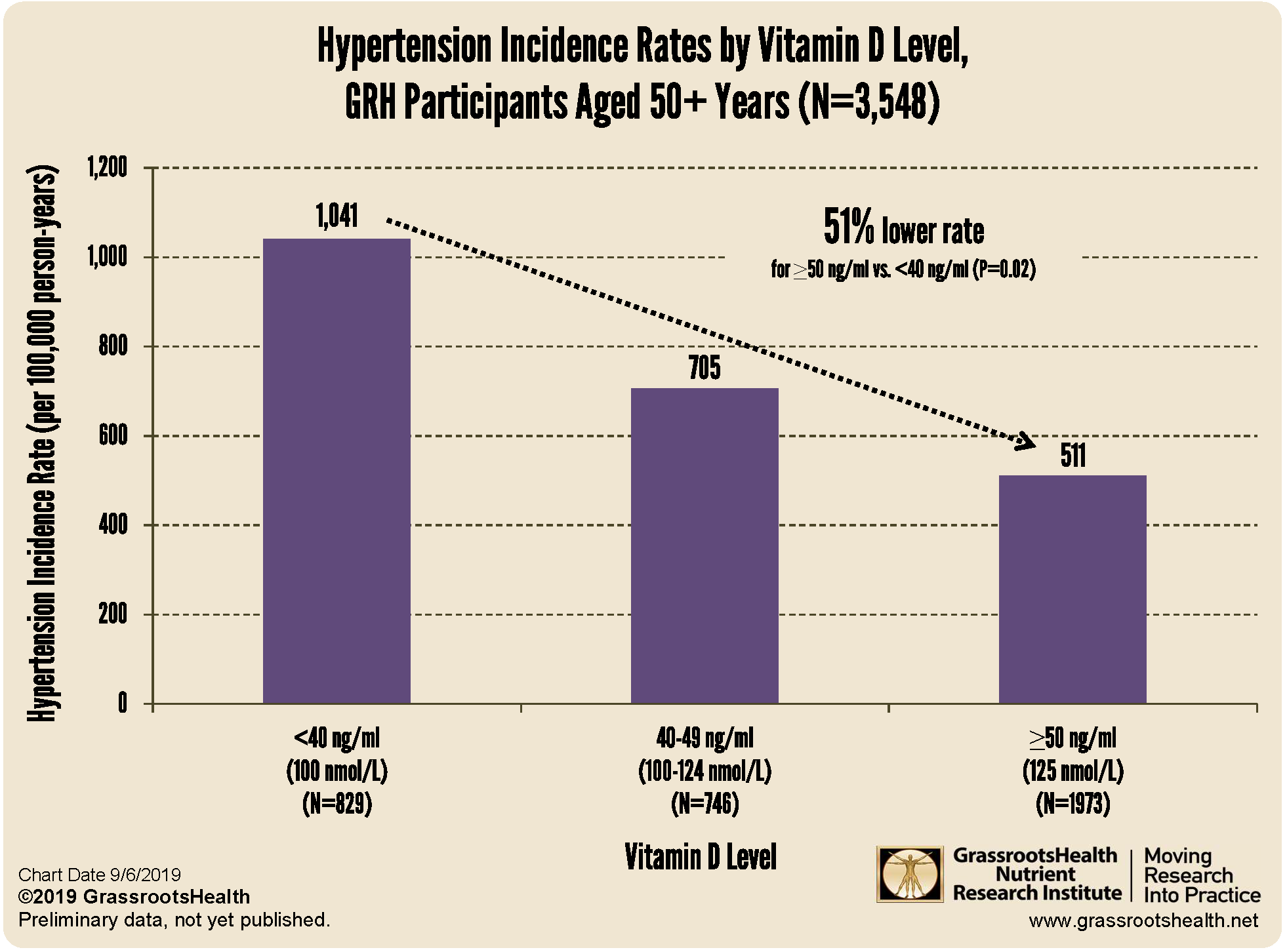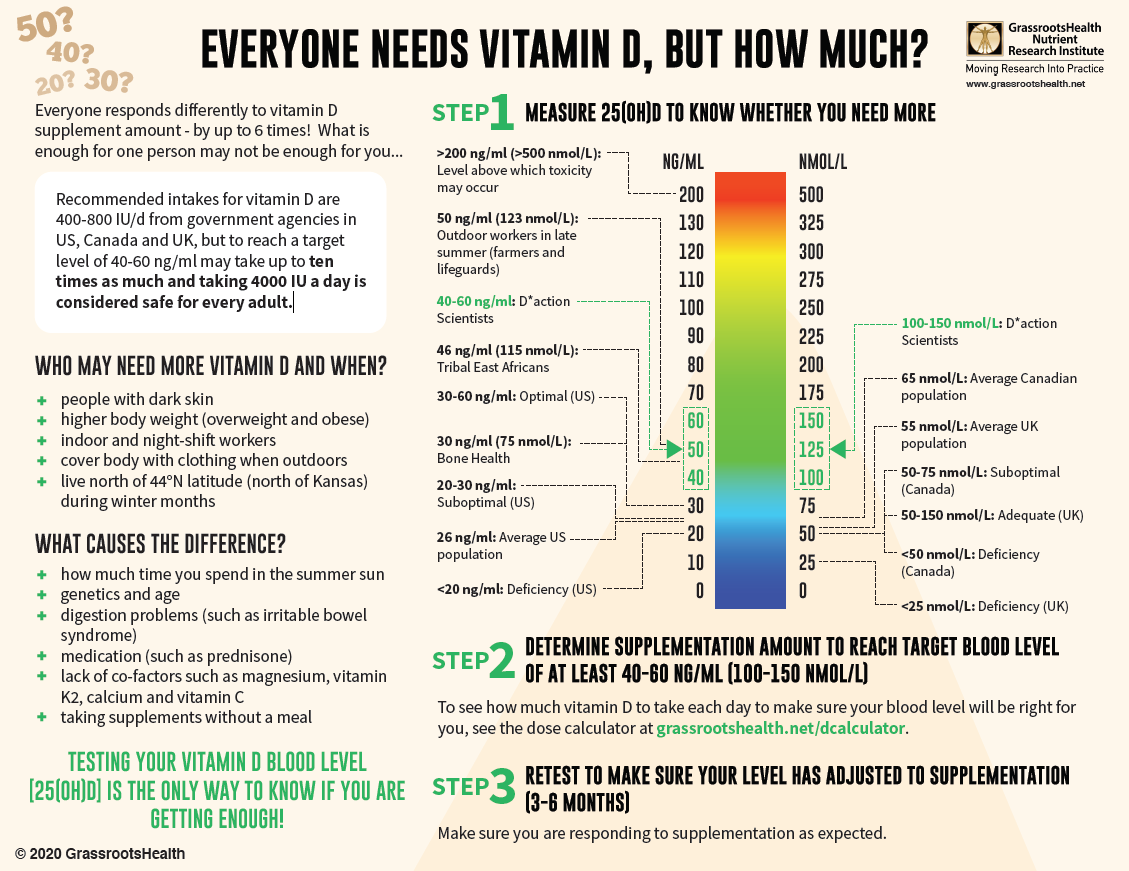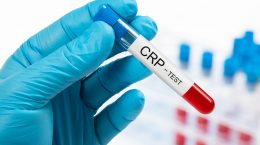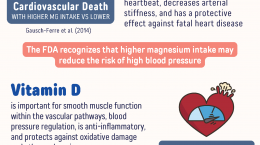Published on March 22, 2021
What is Vitamin D Good For? (Part 6: Cardiovascular Health) – Vitamin D is needed by virtually every cell in the body, and is essential for hundreds of processes each and every day
 Today, as part of our What is Vitamin D Good For? series, we discuss the several roles that vitamin D plays in maintaining cardiovascular health. Vitamin D acts as a protector and regulator so it is able to enhance the functioning of all types of cells, tissues and organs to keep us healthy. So far, we have covered how vitamin D contributes to the health of the musculoskeletal system, dermatological system, reproductive system, respiratory system and to cognitive and mental-emotional wellness. A deficit in vitamin D can lead to impairment or disease in each of these systems – from brittle bones to heart disease, cancer and dementia. With this in mind, why take a chance at being deficient in vitamin D?
Today, as part of our What is Vitamin D Good For? series, we discuss the several roles that vitamin D plays in maintaining cardiovascular health. Vitamin D acts as a protector and regulator so it is able to enhance the functioning of all types of cells, tissues and organs to keep us healthy. So far, we have covered how vitamin D contributes to the health of the musculoskeletal system, dermatological system, reproductive system, respiratory system and to cognitive and mental-emotional wellness. A deficit in vitamin D can lead to impairment or disease in each of these systems – from brittle bones to heart disease, cancer and dementia. With this in mind, why take a chance at being deficient in vitamin D?
Summary of Overall Benefits of Vitamin D for Cardiovascular Health
Vitamin D has a direct effect on vascular cells and plays a role in normalizing blood pressure, blood sugar, calcifications, and smooth muscle function.
Vitamin D functions in the cardiovascular system to:
- Regulate blood pressure
- Important for renin-angiotensin-aldosterone system
- Protect against oxidative damage and atherosclerosis
- Important for smooth muscle function (vascular pathways)
Cardiovascular Diseases associated with low vitamin D include:
- Hyperlipidemia
- Hypertension
- Atherosclerosis
- Peripheral Artery Disease
- Congestive Heart Failure
- Atrial Fibrillation
- Chronic Kidney Disease
Vitamin D Deficiency Shown to Negatively Impact Health of the Heart and Blood Vessels
Cardiovascular disease (CVD) is the leading cause of death in the United States, making strategies to help prevent and treat CVD of utmost importance.
A recently reviewed study found that the prevalence of multiple CVD conditions was significantly higher among those with vitamin D deficiency compared to those without deficiency. The study found that those with vitamin D deficiency also had significantly higher rates of severe or extreme disability following CVD events, and were more likely to have a non-home discharge from the hospital, compared to those without deficiency.
Another study looked specifically at the association between vitamin D and peripheral arterial disease (a condition in which narrowed blood vessels reduce blood flow to the limbs) in patients with type 2 diabetes, and found that those with vitamin D levels below 10 ng/ml (25 nmol/L) were about 4 times more likely to suffer from peripheral arterial disease than those with a level of at least 20 ng/ml (50 nmol/L).
Since inflammation is a known risk-factor for CVD, one study looked at the association between C-reactive protein (CRP), a marker of inflammation, vitamin D levels, and CVD risk. Their data came from 3,848 participants who had reported ever being diagnosed with stroke, heart attack, heart failure, or coronary heart disease by a doctor. Their analysis found that those with vitamin D levels less than 10 ng/ml (25 nmol/L) had a 90% increased risk of CVD compared to those with levels at or above 30 ng/ml (75 nmol/L) (P=0.03). When both vitamin D and CRP were considered together, participants with vitamin D levels below 20 ng/ml and CRP levels at or above 0.2 mg/dL had twice the risk of CVD compared to participants with vitamin D levels at or above 20 ng/ml and CRP levels less than 0.2 mg/dL (P=0.0002). Additionally, when the association between vitamin D and CVD was assessed for those with CRP at or above vs. below 0.2 mg/dL, a significant association was only observed for the higher CRP group. These findings indicate that improving vitamin D status is particularly important in relation to CVD risk for those with higher CRP levels.
GrassrootsHealth Data Shows Hypertension Risk Lower with Higher Vitamin D
According to the American Heart Association, nearly half of the adult population in the United States has high blood pressure, and many of them are unaware that they have it. With no outward symptoms in most cases, it has been labeled a “silent killer.” Left untreated, high blood pressure can lead to heart attack, stroke, and other health consequences leading to premature death.
Using the data you provided for the GrassrootsHealth Nutrient Research Institute study, we assessed the association between vitamin D level and risk of being diagnosed with hypertension (high blood pressure) among participants aged 50 years and older.
We compared hypertension incidence rates according to vitamin D level. The incidence rate among those with vitamin D levels of 50 ng/ml (125 nmol/L) or higher was 51% lower than the rate among those with vitamin D levels less than 40 ng/ml (100 nmol/L) (P=0.02).
This suggests that increasing vitamin D levels above 40 ng/ml could reduce hypertension risk. While we did not have enough participants in the lower vitamin D level range (less than 20-30 ng/ml) to analyze as its own group, it is likely that the risk reduction would be even higher if we were able to compare the rates in those lower levels.
Sun Exposure Provides Additional Benefits for Cardiovascular Health
The effects of the sun go well beyond the production of vitamin D. For example, in addition to vitamin D-producing UVB light, the sun also emits UVA light which initiates the production of nitric oxide in our bodies. Benefits from increased nitric oxide production include dilated coronary arteries, lowered blood pressure, and reduced risk of angina – a condition characterized by severe chest pain and inadequate blood supply to the heart. In fact, research suggests that avoidance or lack of sunshine may be a risk factor for increased blood pressure and death from heart attacks, with one study concluding that avoidance of sunshine resulted in a shorter life expectancy comparable to the shortened life expectancy of smokers!
Other Important Co-Nutrients for Cardiovascular Health
Don’t forget that vitamin D works along with other essential nutrients for our health. For our respiratory health, these include:
- Omega-3s for cardiovascular disease risk and mortality, improved heart function, lowering blood pressure and improving cholesterol status
- Magnesium for arterial stiffness, improved cholesterol status, regulating the heart beat, decreasing risk of death due to cardiovascular disease and improving overall cardiovascular health
- Vitamin K2
Are you getting enough vitamin D and other nutrients to support the health of your cardiovascular system?
With almost 90% of the general population having vitamin D levels below the recommended 40-60 ng/ml (100-150 nmol/L), it is obvious that most people need more vitamin D. While most of us cannot achieve a vitamin D level of 40-60 ng/ml from sun alone, either due to our lifestyle, where we live, or other circumstances, we can certainly reach those levels with the right amount of supplementation.
Below is a guide for how much you might need, and who may need more. Your levels can be tested safely at home – order your home test kit today.
By joining the GrassrootsHealth projects, you are not only contributing valuable information to our study, but you are also gaining knowledge about how you could improve your own health through measuring and tracking your nutrient status, and educating yourself on how to improve it. Do you know what your status of vitamin D, omega-3s, and other essential nutrients is? Could your levels be improved? Test now to find out!








